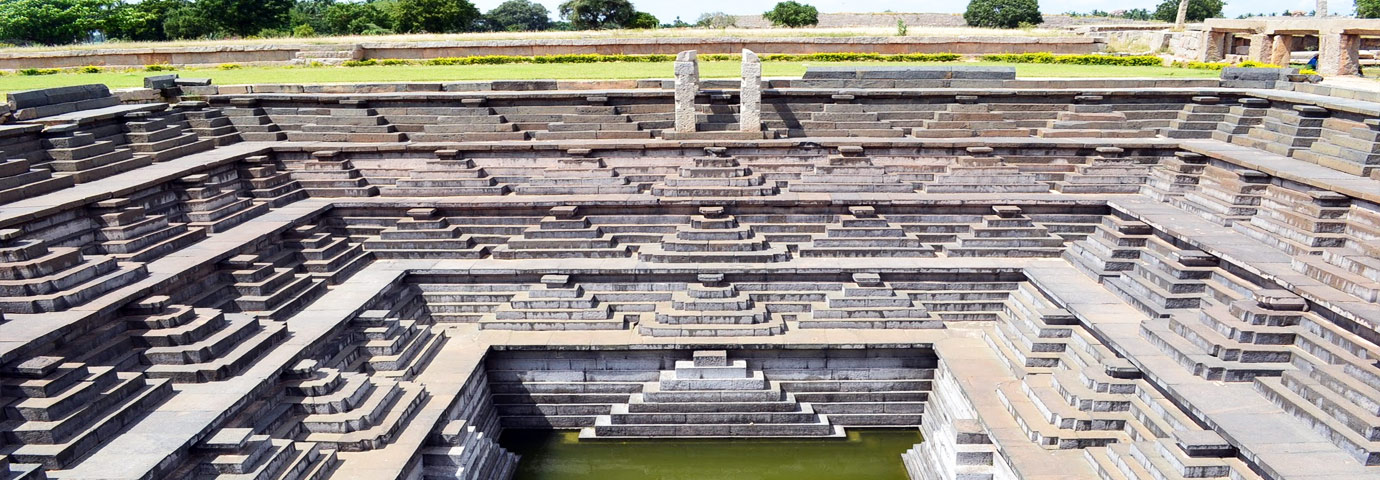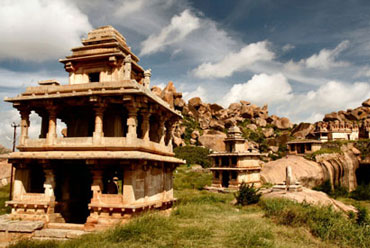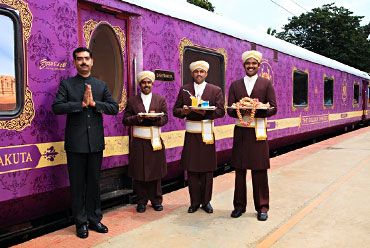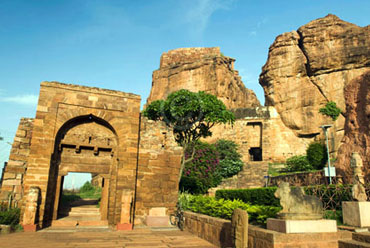The Royal Enclosure in Hampi is one of the interesting ruins of Hampi. The huge fortified area was once the centre of the Vijayanagara Empire. The Royal Enclosure, as the name indicates, was the place where the King of Vijayanagara Empire lived and ruled from. This area was secured by double walls. It had three entrances, two on the northern side and one on the western side.
The Royal Enclosure is spread over 59,000 square metres. It is believed that the complex once housed as many as 43 buildings, all for the use of the royal family. Now, the area has only ruins of several palace bases, water tanks, temple, ornate platform, aqueducts and canals, exquisitely carved doorways and many other structures.
The Royal Enclosure comprised of some of the most wonderful edifices of the Vijayanagara era. Like the other structures of that period, these constructions show abundant use of stones and artwork on them. The enclosure was one of those areas in Hampi that have witnessed the maximum destruction. Some of the palaces and other structures have just their remnants remaining in the form of their bases, while the whole structures have been ravaged by man and nature. Even then, the ruins within the enclosure succeed to provide glimpses of the splendor of the royal life of the Vijayanagara dynasty.
Few remarkable structures within the Royal Enclosure are:
The Mahanavami Dibba is one of the most noteworthy structures found among the ruins in Hampi. It is a pyramidal platform that was vital to the Dasara celebrations observed during the Vijayanagara Empire. The main attraction of the high platform is its decorative carvings of elephants, horses, soldiers and stately processions.
The King’s Audience Hall is a huge structure that was used for hearings by the King. The hall comprises the remnants of 100 pillar-sockets and therefore, is also known as the 100 Pillared Hall.
The Stepped Tank is an elaborate tank which was used for ceremonial purposes of the royal household. The decorative structure has an area of 22 square meters and a depth of 7 meters. It is a 5 tiered tank and each tier comprises of a few steps. The tank now stores rainwater.
The Underground Chamber is one of the most interesting structures that exist in the Royal Enclosure. It is believed to be a secret chamber where the king held important meetings and discussions with his trusted aides.
The Hazara Rama Temple is the only temple that is situated within the Royal Enclosure. The main attraction of the temple is the multitude of bas-relics decorating the walls of the temple. These bas-relics portray the story of Ramayana. The relics also portray processions of soldiers, elephants, horses, attendants, and dancing women taking part in the Dasara festival rally during that period.
The Aqueducts in Hampi are an intriguing network of waterways that provided water to all corners of the town, including the Royal Enclosure.
The Public Bath is an enormous pool. It is connected to the main aqueduct that runs through the Royal Enclosure. The watercourse used to provide the pool with fresh water during the days of the Vijayanagara Empire. It is believed that the pool was open for use by the common people as well as for organizing water sports.
The Royal Enclosure in Hampi has suffered the maximum damage. The open air museum that is scattered with relics from history. The Archaeological Survey of India has renovated some buildings but even in its ruined form it is one of the most interesting spots to visit in Hampi.
Timings : 8:00 AM - 6:00 PM on all days of the week.
Entry Fee : No entry fee required





